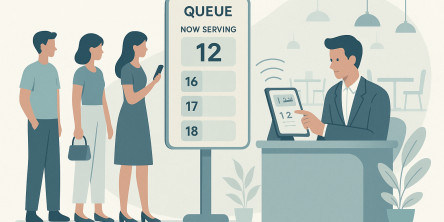Future of Television: Why OTT Branded Apps Lead the Way

Unless you live under a rock, you know that television and the overall idea of content consumption have changed drastically and beyond anything we would have imagined three to four decades ago. Over-the-top (OTT) apps continually reshape today's future of television. They are currently playing a transformative role in the media and entertainment industry and it is undeniable and cannot be overstated. You might wonder why. Well, look around, and you will notice that OTT apps have fundamentally changed how we consume content while empowering users like us with mind-blowing control over what content they watch when they watch it, and even where they watch it. With the emergence of globally popular streaming services offered by platforms such as Apple TV+, Amazon Prime Video, Disney+, and Netflix, the conventional cable and satellite TV models will practically get extinct or at least be subjected to intense transformation.
In this blog, I will explore why OTT branded apps are the future of television and the key factors driving this transformation.
Future Of Television Through OTT Apps
OTT applications have entirely transformed content delivery while ushering in a fresh era of original programming. Despite fierce competition within the streaming industry, we find ourselves amidst what experts call the "golden age of television," offering a rich array of top-tier content spanning diverse genres globally. And while this is undeniably impressive, OTT apps have reshaped the entertainment landscape in more ways than one. Join me as I explore the additional facets of OTT, revolutionizing the entertainment sector.
● Growing focus on user experience: One of the most essential ways OTT has transformed the entertainment sector is by focusing intently on user experience. You see, OTT apps bring a large variety of features developed to make it easy and enjoyable for viewers to watch their favorite shows and movies. This is why, besides intuitive interfaces, OTT services offer personalized recommendations, flexibility to manage content on multiple devices, etc. This shift helps foster a decidedly more engaging and user-friendly entertainment ecosystem.
● Target audience customization: Another crucial way in which OTT has practically changed the face of the entertainment sector is by making it easier for content creators to target specific audiences. How? Well, OTT platforms use advanced tools such as data analytics and algorithms to understand user preferences and then tailor content according to the expectations and needs of specific target audiences.
● User retention: We all know retaining subscribers is a primary concern for OTT platforms. This critical importance of user retention is noteworthy because it has led to excellent innovation in the entertainment sector. To maintain viewer interest, OTT services create a constant stream of fresh content and offer tiered pricing models and bundled services.
● Global reach: Since OTT apps can be accessed over the internet from anywhere in the world, there has been an increase in diversity in storytelling, encouraging viewers to explore a broader range of perspectives that were not so readily accessible via traditional TV.
● Data-Driven Insights: OTT platforms gather vast amounts of data about user behavior, preferences, and viewing habits. This data is invaluable for content creators and advertisers, enabling them to make data-driven decisions, tailor content, and optimize ad campaigns. Traditional TV, by contrast, lacks this level of insight into its audience.
● Content Variety and On-Demand Viewing: OTT apps offer an extensive library of content that spans various genres and languages. Viewers can watch what they want when they want, thanks to on-demand streaming. This flexibility has disrupted the traditional TV model, where scheduled programming limited viewers' choices. In the OTT world, binge-watching an entire season of a favorite series in one sitting has become the norm.
Final Words
To conclude, modern-day OTT apps have started disrupting the traditional televised programming content. It is poised to dominate the future, guided by superior user experience, personalization, and accessibility. And it is the ability to provide a wide variety of content, including original programming, makes OTT apps attractive to viewers and content creators alike. As the industry continues to evolve further, it's clear that OTT branded apps are set to redefine how we consume television, shaping the medium's future for years to come. If you also want to jump on this bandwagon, I recommend contacting a trusted custom OTT platform development company immediately!
Similar Articles
The modern age of customers expect constant availability, no matter what the offer. And for that, the market requires rapid innovation cycles. In such a high stakes environment, technology infrastructure is more than just a cost center.
When evidence seals fail, cases weaken. Explore how compromised chain of custody can derail investigations and jeopardize justice.
Compare hydraulic and traction residential elevators to find the best fit for your home. Learn how each system works, their pros and cons, space needs, energy use, and maintenance requirements.
Extend the lifespan of your commercial marina docks with proactive maintenance. Learn essential inspection routines, material-specific care, and safety tips to protect your investment and ensure long-term dock performance.
Learn the key factors in designing an engineered fall protection system. Discover how hierarchy of controls, task analysis, structural integrity, and fall clearance ensure safety and compliance.
Today, modern businesses face constant pressure to operate with maximum efficiency. This requires a technology infrastructure that is both agile and robust. However, the traditional model of on-premises data centers often has significant limitations. These legacy systems can drain valuable resources from teams.
When people are hungry, standing in line for a table feels tiring and unpleasant. In fact, research shows that most individuals will just walk away if they have to wait longer. They will go and find another place to eat.
In the early stages of designing new community centers, fire stations and administration buildings, city planners and architects are forced to make a crucial decision: What building material is best suited for providing the most value, safety and longevity to the public?
Amazon Simple Queue Service (SQS), Simple Notification Service (SNS), and EventBridge are just a few of the messaging services that AWS provides to meet various demands when it comes to creating scalable and effective cloud systems.









